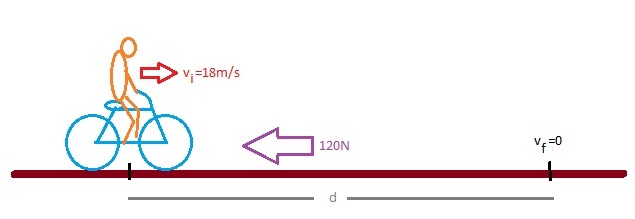A cyclist of mass 80kg is travelling with speed #18ms^(-1)#. The cyclist stops peddling and comes to rest, without braking, due to resistance forces totalling 120N. (see ? below)
a) find how long it takes the cyclist to stop
b) find the distance the cyclist travels before stopping
c) describe one limitation in this model
a) find how long it takes the cyclist to stop
b) find the distance the cyclist travels before stopping
c) describe one limitation in this model
1 Answer
I tried this:
Explanation:
Consider the diagram:

and let us use Newton`s Second Law:
where the cyclist stops peddling so that the only force present is the resistance force that will produce a negative acceleration (de-celeration) that will stop him. We get:
so:
We go now into Cinematics and use:
and so:
also:
or:
Probably the resistance force will not stay constant for the entire time.
Also, the guy towards the end probably will not be able to maintain its equilibrium and either start to wobble and go erratic or simply fall to the ground...

